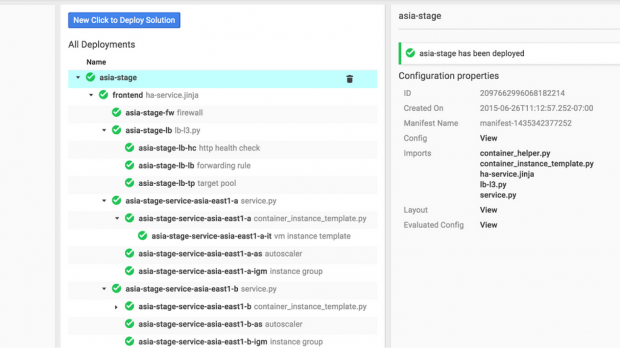Back in May, Google released Cloud Deployment Manager in beta. It’s now generally available and ready for anybody to use for production.
The tool lets you create, deploy, and manage Cloud Platform resources. You can create dynamic templates that describe your desired configuration and use it to create Cloud resources as a single deployment.
In a blog post, Google lists the following features:
– Define your infrastructure deployment in a template and deploy via command line or RESTful API
– Templates support jinja or python, so you can take advantage of programming constructs, such as loops, conditionals, and parameterized inputs for deployments requiring logic
– UI support for viewing and deleting deployments in Google Developers Console
– Tight integration with Google Cloud Platform resources from compute to storage to networking, which provides faster provisioning and visualization of the deployments
Using Deployment Manager will not cost you anything extra. It supports most Google Cloud Platform services and let you use tools like Google Developers Console and GCloud.
Google says when it’s asked how Deployment Manger is different from other systems like Puppet, Chef, SaltStack, or Ansible, it notes that none of these are natively integrated into Cloud Platform.
“Deployment Manager provides a declarative system that allows you to express what you want to run, so that our internal systems can do the hard work of running it for you,” says Google Technical Program Manager Chris Crall. “Unlike other configuration management systems, Deployment Manager offers UI support directly in Developers Console, allowing you to view the architecture of your deployments. You can take advantage of Deployment Manager to provide the resources and use your existing tools to manage the software. Or move to containers and pre-bake the software configuration in your build step and use Deployment Manager to manage the resources and configure the containers to run. Use the option that works best for you.”
You can find an overview of Deployment Manager here.
Image via Google







 WebProNews is an iEntry Publication
WebProNews is an iEntry Publication